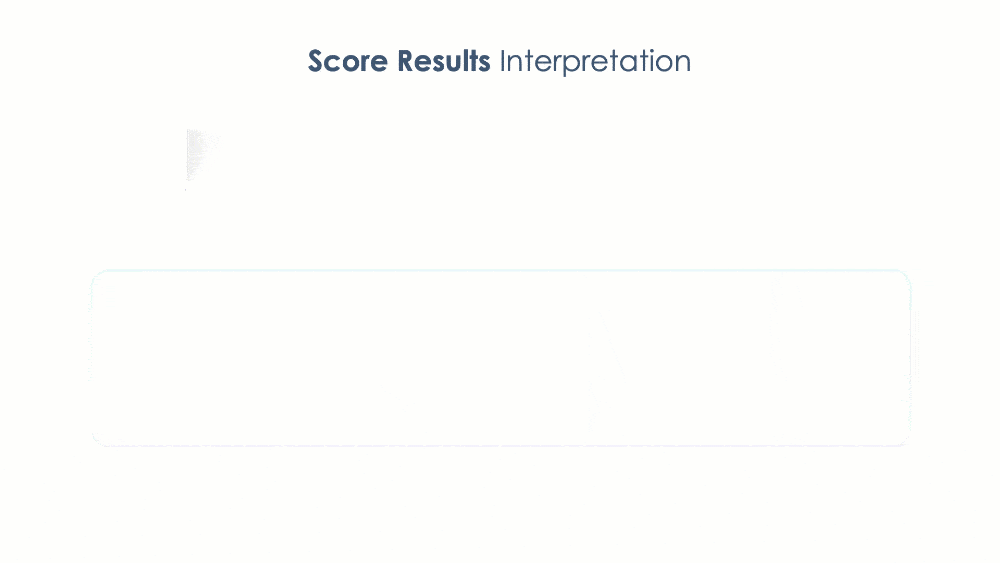Synopsis
You want to transform your business, but how do you ensure your innovations succeed? We'll explain tools that execs can use for innovation and transformation the right way, including an innovation ambition matrix, the Kubler-Ross Change Model curve, a SCAMPER Mind Map, Maturity Assessment Scoreboards and the Phase-Gate Process, all of which you can download and customize for your needs.
Outcome
Innovation isn't only about technology or products. Massive company-wide efforts can affect other internal processes that aren't obvious from the naked eye. To avoid tunnel vision focused on an end goal, these tools help execs consider how potential changes impact their workforce, workflows and processes in addition to services or products. It's helpful to think of transformation as an iterative process that joins together internal and external efforts. For instance, you could develop an idea for an innovation, but throughout the development process, the idea will change. This new idea will change the workflow, and then the workflow will change to fit the new idea. In this way, the tools in this framework are meant to help execs take the right actions to successfully carry out the right ideas.
Tool highlights
Innovation ambition matrix
When a business begins the innovation process, it needs to start with a target goal or big idea. So how do you know what ideas to undertake and how many resources to allocate to each?
Facebook has been around for 17 years, and is known primarily as a social media platform. Over the years, additional products and services have been rolled out like Facebook messenger, marketplace, and even dating. However, after a wave of controversy this year, CEO Mark Zuckerberg announced the company would rebrand to "Meta" and focus its company on pursuing the creation of the "metaverse." Why?
Before we answer that, an innovation ambition matrix details the levels of innovation a company goes through. Companies don't necessarily go through innovation in this order and don't have to go through all these, but it's a helpful guide to plot innovation strategies to chart a successful transformation.
These three stages are assessed based on where to play, i.e. if the innovation will play out in existing markets or explore new ones, and how to win, which covers the strategy either to utilize existing products and assets or develop new ones.(Slide 19)
Core innovations are any changes a company undertakes to optimize what it already offers. These would be adjustments to core services, customers and products. For example, Facebook started out with core product innovations as it attempted to optimize its original platform with groups and pages, third-party integrations and advertiser tools.
Adjacent transformations are expansions from existing businesses into new ones. In Facebook's case, this would be an effort like the acquisition of Instagram or WhatsApp, which the company paid $19B to acquire.
Transformational changes are an effort to develop breakthrough products in an entirely new market. In Facebook's case, this is Meta - CEO Mark Zuckerberg wants to be first to a new market and tackle it at scale with the new products they are developing like Project Cambria set to launch next year and ReSkin, which enables super precise touch movements via a new fabric.
Allocation and ROI for transformational changes are both high. Ideally, you want to achieve an allocation of resources with the highest ROI. In some cases, in order to get high resources, you need to invest a lot. For instance, Meta will spend $10 billion next year and double its workforce to 20,000 engineers as part of the metaverse rebrand. Mark Zuckerberg believes that by the end of the decade, if not by 2025, VR tech could be better for almost every use case than phones and laptops — and it's a bet worth taking.
If Facebook can control the "entry points" into this new market, the ROI could be very fruitful. Despite the company's 3 billion users across all its social platforms, it doesn't control the entry points to access its apps, and has begun to feud with Apple over new privacy controls for its App ecosystem. If Meta can beat Apple's own VR headset, which is expected to be released in late 2022, then it has a chance to control this new medium — if it ever truly takes off.
By the way, to make sure you're on the right track to develop the right idea, and not allocating all your resources for zero return, we have an idea evaluation canvas also provided in this framework to assess your concept for great market potential and complement your strategic goals and ultimately be feasible to execute and carry out. Just check out the link in the description for more. (Slide 9-10)
Kubler-Ross change model curve
Now that you have a plan on how to innovate, you'll need strong managerial leadership to guide your team through this period of transition. Change management is hard. Most recently, big tech companies like Apple and Google have struggled to manage the change to remote work, and have feuded publicly with their employees over expectations about what days they will have to return to the office to work. Apple wants employees to come in on specific days with a minimum of three days per week, while many employees want to fight for flexibility and autonomy.
The Kubler-Ross Change Model Curve is useful for execs as their teams undergo periods of transformation like tech companies and remote work. Psychiatrist Kubler-Ross developed this curve to highlight the emotional stages everyone goes through when met with a new challenge. It explores the human psychology of change more in-depth than your typical change management curve as each stage covers specific human emotions.
Even if changes are rational and realistic, this curve explains how the human element of stakeholders involved can still disrupt the innovation process. The initial shock, denial, and frustration around the change will inevitably lead to a depressive slump in productivity and morale. Through anticipation of this change, management can allow the team space to get over the depression hurdle and encourage them as the team's confidence rises. This makes way for the experimentation stage, which naturally leads individuals and teams to an ultimate determination to work with this new situation. From that point on, the new workflow is integrated throughout the organization and becomes second nature.
If transformation and the change process are managed successfully, it will create alignment between teams, optimize communication between stakeholders, develop the right capability to share knowledge and spark innovation.
SCAMPER mind map
Now that you've managed the transition of new innovation, how do you maintain a culture of innovation?
The robotics company Boston Dynamics has produced and developed dynamic robots like these for over 30 years. The company, founded by Mark Raibert, was originally an offshoot from his work at MIT and Carnegie Mellon and has been owned by multiple parent companies, including Google, SoftBank, and now Hyundai.
In addition to its clever PR videos, Boston Dynamics has continuously improved and innovated its robotic technology over the years, and its Spot and Stretch are the closest to commercial its robots have ever been. To develop your own perpetual innovations, SCAMPER is a free-flowing mind map that execs can use as an ideation method to facilitate continuous improvement.
To use SCAMPER, take an existing product or service and ask a series of brainstorm questions in the following order: What materials, processes, rules, products, or integrations could be substituted to improve this product? What would happen if you combine this product with another idea, or with another objective? How could you adopt a new purpose to this product or service? How could you modify this product to maximize its value or minimize costs? Could this product be put to use in another industry? Could you eliminate, simplify or streamline this product or its features? What if you reversed your current workflow processes, even doing things in the exact opposite order you're trying to do them now?
These brainstorm questions are useful for core ideation and to find creative solutions to unusual problems and continuously improve, iterate and innovate across your business.(Slide 22)
Maturity assessment scoring
Your business now has a culture of continuous innovation. How do you assess what areas need further improvement?
Digital transformation has been a major goal for many legacy businesses as the world has increasingly gone online. Two areas you might not think of first when it comes to digital transformation? Sports and beer. Anheuser-Busch, who owns Budweiser as well as other brands like Stella and Corona, established a research center for this purpose. Developments at the digital R&D department led to low-alcohol canned wine, a beer delivery app and a beer vending machine that made over $1B in sales. Another company, the San Francisco 49ers, had its own digital transformation with a new venue management platform to help the team visualize data to improve all operations across cashiers to clogged toilets.
A Maturity Assessment Scoring Chart can be used by execs to score their digital maturity. After you complete a series of questions across customer experience, workplace, and information technology (Slide 26-29), review your scores to discover your relative strengths and weaknesses with this scoreboard.(Slide 30)
In this example, the company's IT infrastructure is rated high, which means resources don't need to be allocated there. This could be a forte to use to your advantage. By contrast, the digital maturity of operations is low, which means you could use this assessment to dedicate resources to improve digital operations. This could be what the 49ers concluded which led to the development of their venue management platform.
Phase-gate process
You should now have a pretty clear view on the concepts behind business innovation and transformation. So how do you execute and implement these tools?
The phase gate process is a tool that large companies rely on to execute their own innovations. It is an operational roadmap to move innovation from concept to launch. For instance, the company Lego uses stage-gate as its core development process to develop innovative new products, expanding from plastic blocks into video games and movies as well as robotics and now sustainable research and development for bio-plastics as part of a $400 million effort.
To use the phase-gate framework, follow the process outlined on this slide to take any innovation and transformation from ideation to launch. Between each phase, key milestones have to be hit to validate key priorities. Then, a decision is posed to either move forward or stay by the team manager. In the first stage, key milestones like business strategy, customer benefit, and technology to be developed need to be made before you move on to the next phase to flesh out your early concept.
Once you pass through your business case and validation stages, you enter the back-end[bold] phases that are all about development and launch. Execs implement their innovations from [bold]setup to concept to pilot development, prototype and finally launch. Implement this successfully to turn any idea into reality — or save countless headaches developing something all the way to production that shouldn't have even made it past the first phase.
For more Innovation and Transformation Tools , you can download this full framework. You'll gain more tools like an Innovation Canvas, Idea Evaluation, Execution Framework, Innovation Value Chain Assessment and Customer Journey Canvas which you can customize to your needs.





































